WalkAbout is an experimental virtual environment for learning and work that I have been working on since late 2020.
Here is a short presentation about it, presented to the Universeh project on 210602.
WalkAbout is an experimental virtual environment for learning and work that I have been working on since late 2020.
Here is a short presentation about it, presented to the Universeh project on 210602.
I am currently taking a course at Coursera called What future for Learning and I thought I would share some reflections. Here is the first text.
How we learn and how we teachers should support this learning for students has been in my mind for a long time. I have been a teacher at university level for 26 years and my personal teaching methods have changed a lot over the years.
How much time should we spend on summative vs formative examination? I teach mainly advanced project courses and here a combination of both is very good. The students get assignments where they must reflect on their learning during the course, learn from each other via continuous group presentations and peer reviews of each other’s writings together with verbal presentations in the middle and the end of the course and a written report at the end. At the same time, I am often a guest lecturer in other courses and here I get asked to give the other teacher quiz questions for the final examination and I find this tough. Creating good quiz questions is hard. E.g., it should not be something the student could just easily search for on the Internet but rather be a question that triggers reflection and thought and this is something I would much rather do via a written assignment.
One pedagogical idea is that the students should get variation in their learning. There is no template for learning that suits all, neither teachers nor students. As a teacher, I want the students to reflect on their learning and go back and see if they could have solved a task differently.
In this first part of the course, What Future for Education the key things I take with me is how the course and assignments are set up. Already in this first week, we as students get a high variation in tasks and how the material is presented. There are videos but also transcripts if I prefer to read instead (even if the transcripts are not perfect unfortunately). There is a longer text as well as other students writing via the Paddlet and forum. All this helps me learn via variation and triggers me to reflect as the material is just not one big homogeneous mass.
Finally, I reflect that for me personally as a student the most attractive way of learning is that I can do it anywhere thanks to “modern” tools. These days, I have a really hard time learning from books (the old, printed type) but rather, I want to have different resources with me electronically. E.g., if I am waiting somewhere, then I can take 5-10 min to read, watch or listen to something or write something in a journal (electronically of course). Learning should be possible to be done anywhere and anytime. How does this rhyme with today’s school system where students are supposed to learn a specific thing at a specific time and at a specific place?
On 210525 I present the following abstract at Design for Learning 2021. The conference is held online.
This abstract presents the results from an informal learning process called Luleå Game Create where children, ages 7-15 and accompanying adults got a gentle introduction to computer game creation in a Makerspace [1] setting at Luleå Makerspace where special focus is given to gender equality [2].
Luleå Makerspace was founded in 2013 with the goal to provide an open learning environment [3] for people of any gender and background to realize their ideas, i.e. go from idea to prototype using modern tools and learn from each other. The Makerspace provides a creative environment where learning is done through either unstructured personal interactions or via organized workshops [4].
Luleå Game Create
Luleå Game Create is a series of informal workshops run during 2019-2020 where the participants learned how to create computer games. The format is based on that a workshop leader shows how to create different types of games and the participants get to make the games their own via various choices. The technical platform used is Unity, a professional game development engine [5].
Material for each workshop is designed with two parts; 1: pre-made digital libraries to help game creation, and 2: detailed instructions on how to create the game and highlights different features. The instructions are shared openly and can be used by the participants after the workshop [6].
The length of each workshop is 2.5 – 3 hours and the participants can either loan pre-setup computers at the makerspace or bring their own devices which they have to pre-configure at home. During the workshop much focus is placed on that everybody can follow along and participants are encouraged to help each other. Some of the children participate on their own and some together with an accompanying adult. Each workshop has between 10 and 15 participants and the workshops do not build on each other even though they might be divided up over two sessions.
Focus is placed on gender equality with the long-term goal of raising interest for studying STEM and Computer Science subjects among young girls [7]. All workshops where open to both genders except one where together with the company Star Stable, a horse game was created.
Discussion and Conclusions
Luleå Game Create has run during 2019 and 2020 and so far about 75 participants attended the workshops. The feedback has been very positive with an overall grade of 4.5 out of 5 and 9 out of 10 say that they have gotten an increased interest in creating computer games and want to learn more.
Requests for future topics include various details related to creating games but also other maker skills such as modelling for physical fabrication using 3D-printing and laser cutting.
For the non-girl specific workshops, the gender balance is about equal between the children but surprisingly biased towards women among the adults (i.e. mothers and relatives) which has led to that a specific workshop for adult women is being planned. This is very positive as adult role models are important.
During the pandemic the series moved online using Zoom instead but unfortunately with less interest from the earlier participants.
References
[1] P. Blikstein, Digital fabrication and ‘making’ in education: The democratization of invention, in: J. Walter-Herrmann, C. Büching (Eds.), FabLabs: Of Machines, Makers and Inventors, Bielefeld, 2013.
[2] Sylvia Walby, The European Union and Gender Equality: Emergent Varieties of Gender Regime, Social Politics: International Studies in Gender, State & Society, Volume 11, Issue 1, Spring 2004, Pages 4–29, https://doi.org/10.1093/sp/jxh024
[3] Tomko, M, Schwartz, A, Newstetter, W, Alemán, M, Nagel, R, & Linsey, J. ““A Makerspace Is More Than Just a Room Full of Tools”: What Learning Looks Like for Female Students in Makerspaces.” Proceedings of the ASME 2018 International Design Engineering Technical Conferences and Computers and Information in Engineering Conference. Volume 7: 30th International Conference on Design Theory and Methodology. Quebec City, Quebec, Canada. August 26–29, 2018. V007T06A036. ASME. https://doi.org/10.1115/DETC2018-86276
[4] Kajamaa, A., & Kumpulainen, K. (2020). Students’ multimodal knowledge practices in a Makerspace learning environment. International Journal of Computer-Supported Collaborative Learning, 1-34.
[5] Unity: Make real-time 3D projects for Games, Animation, Film, Automotive, Transportation, Architecture, Engineering, Manufacturing & Construction. Visualize & simulate industrial projects in 3D, AR, & VR. https://unity.com/
[6] Peter Parnes (2019-2020). Instruktioner för Luleå Game Create #1 Hoppspelet – en lärarledd workshop i Unity. https://docs.google.com/document/d/1L2e5eP8BhoOfzFNWAlUeDO4b_FxqO4Rcev00dQlrbnA/
[7] Ashcraft, C. S. (2013, March). Girls in IT: the facts-a comprehensive look at the latest research on gender and technology in K-12 contexts. In Proceeding of the 44th ACM technical symposium on Computer science education (pp. 740-740).
210323 håller jag en kort presentation (16 min) på konferensen Framtidens lärande i norr om just framtidens lärande med modern teknik.
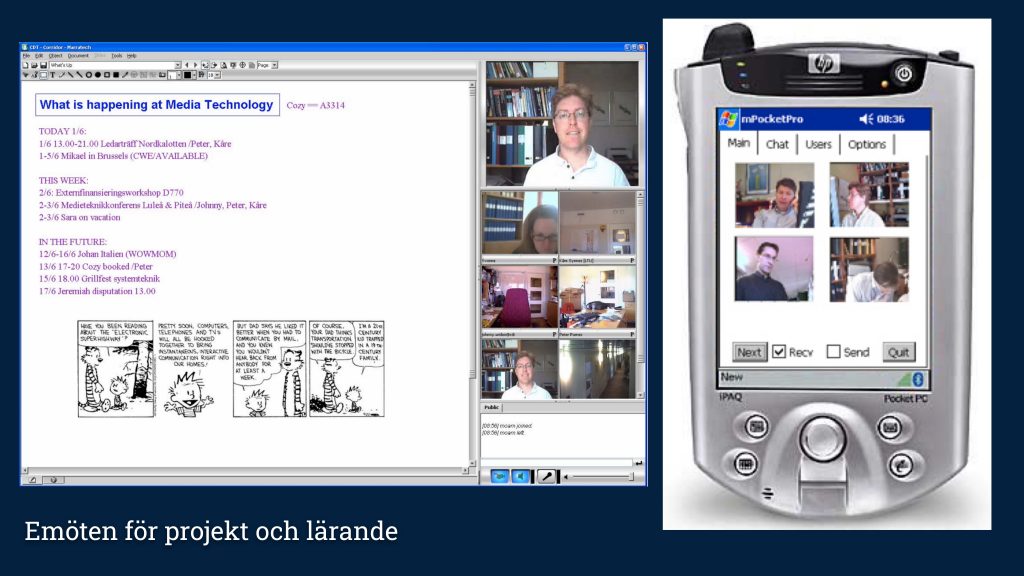
Jag har lyxen att kunna välja var jag jobbar ifrån (till nästan 100% av min arbetstid) och just nu väljer jag socialt avstånd via elektroniska verktyg eftersom jag känner en mycket liten retning i halsen (förkylning). Dock känner jag att nu när läget känns mer och mer skarpt så är också behovet av att prata med andra större än normalt.
Något jag verkligen saknar är den e-corridor vi hade på 1990- och i början av 2000-talet där vi kunde se varandra och interagera spontant. Detta var en del av vårt egna verktyg mStar som sedan kommersialiserades från 1998 som Marratech och slutligen uppgick i Google 2007. Tyvärr finns det idag inga bra verktyg på marknaden för denna typ av förmedling av närvarokänsla!
Detta handlar inte bara om teknik utan också om ett förhållningssätt och en vilja från gruppen att faktiskt vilja umgås elektroniskt. En kul anekdot är att vi ofta satt hemma och jobbade tillsammans men träffades ändå på jobbet för att fika tillsammans efter att något föreslagit att vi skulle göra det.
Jag saknar den typen av samhörighet.
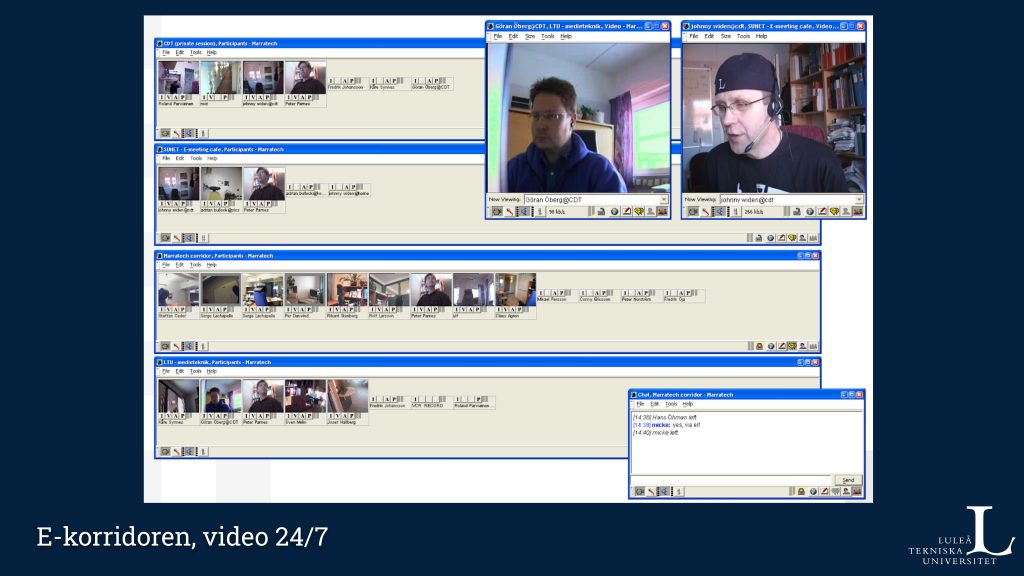

Onsdag 191016 ger jag en Keynote på konferensen Next Generation Learning 2019. Det är en konferens helt online och den är öppen för alla. 1300-1400 ska jag prata om framtidens lärande med fokus på digitalisering och AI.
Här är en kort intervju med mig.
Här hittar ni min presentation
och här är en inspelning.
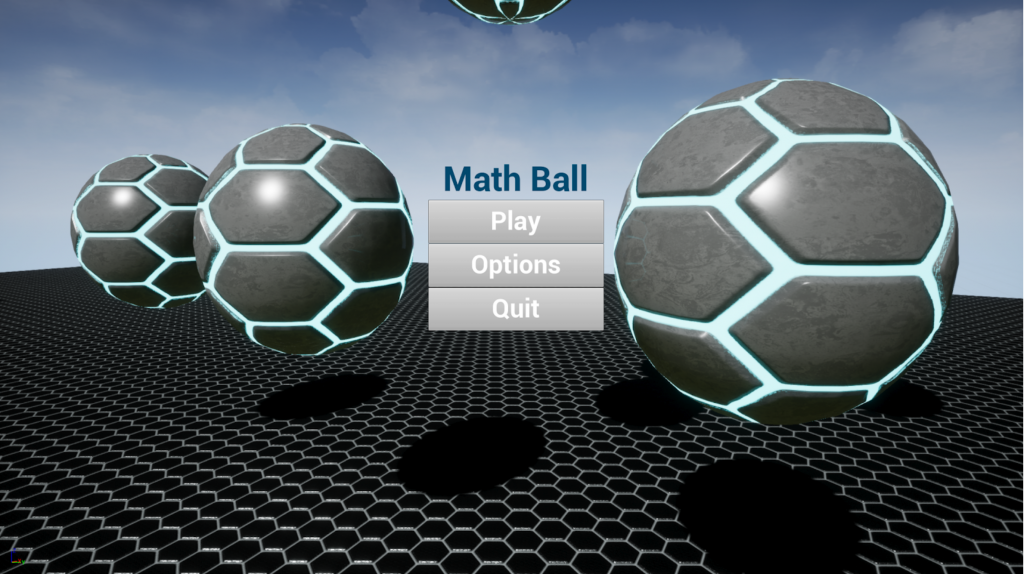
190221 arrangerade jag på LTU en workshop om dataspel och lärande. Dvs., hur dataspel och dataspelsteknik kan användas som en del i en lärandeprocess. Det blev ett mycket lyckat arrangemang med extremt mycket kreativa tankar om framtiden och hur man kan bygga spel för lärande. Målet var att ta fram konkreta idéer på nya lärspel. Tyvärr blev det lite ont om tid på slutet (vi hade 2.5h totalt) men vi fick ihop två väldigt konkreta förslag; BUFF, ett fysikspel och Who am I?, ett spel där man ska utforska livet och bland annat lära sig om andra kulturer.
Tack till alla som deltog i workshoppen!
Projektet “Dataspelsteknik för nya tillämpningar.” leds av mig@Luleå tekniska universitet och finansieras av Luleå Kommun, LTU och Region Norrbotten.
Jag introducerade med en presentation för att inspirera deltagarna och lite sätta ramarna (som gav väldigt mycket frihet). Här kan ni se min presentation.
Här är ett interaktivt exempel, baserat på Math Hall från Unreal där studenten från se olika matematiska funktioner, dels som grafer och dels tillämpade i olika datorgrafiksituationer. Studenten får möjlighet att ändra parametrar och direkt se effekten.
Här kan ni prova i en webbläsare eller ladda ner och köra direkt på datorn.
Webb
Windows
Mac
Obs nedladdningen är på 200-300MB.
Inne i spelet går ni omkring med WASD (går snabbare med shift intryckt) och titta er omkring med musen. Webbversionen kräver en modern webbläsare och det ser snyggare ut om man kör lokalt (ladda ner binärer).
Vad tycker ni om denna typ av applikationer för lärande?

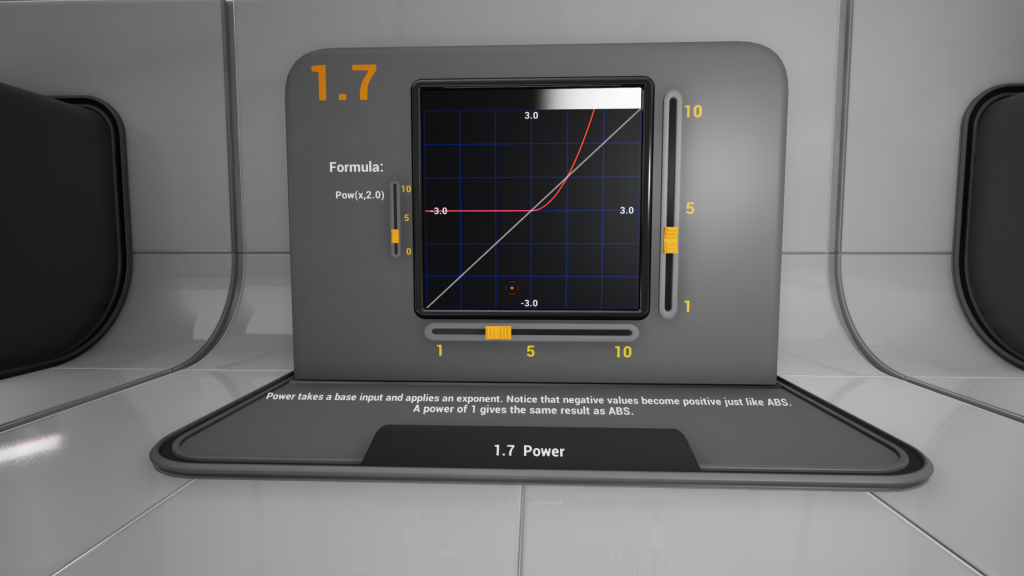
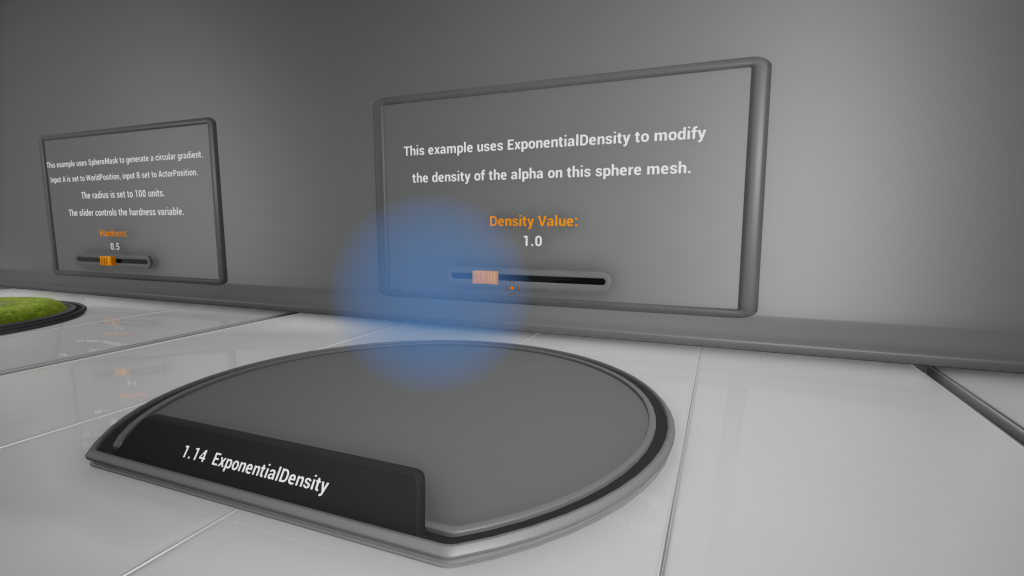


Skapande är en naturlig del i Luleå Kommuns digitaliseringsdag LETT. Peter Parnes och Tovah Parnes höll en heldagsworkshop för 18 lärare (bild, slöjd och teknik) om skapande med digitala verktyg på Luleå Makerspace.
Presentation
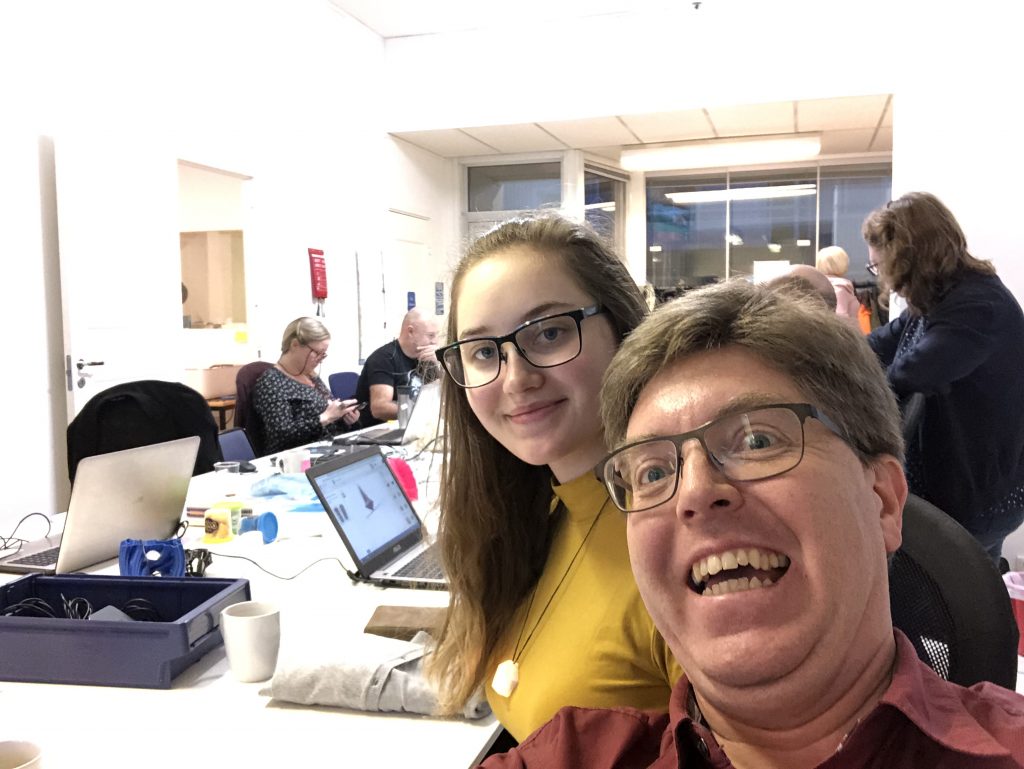
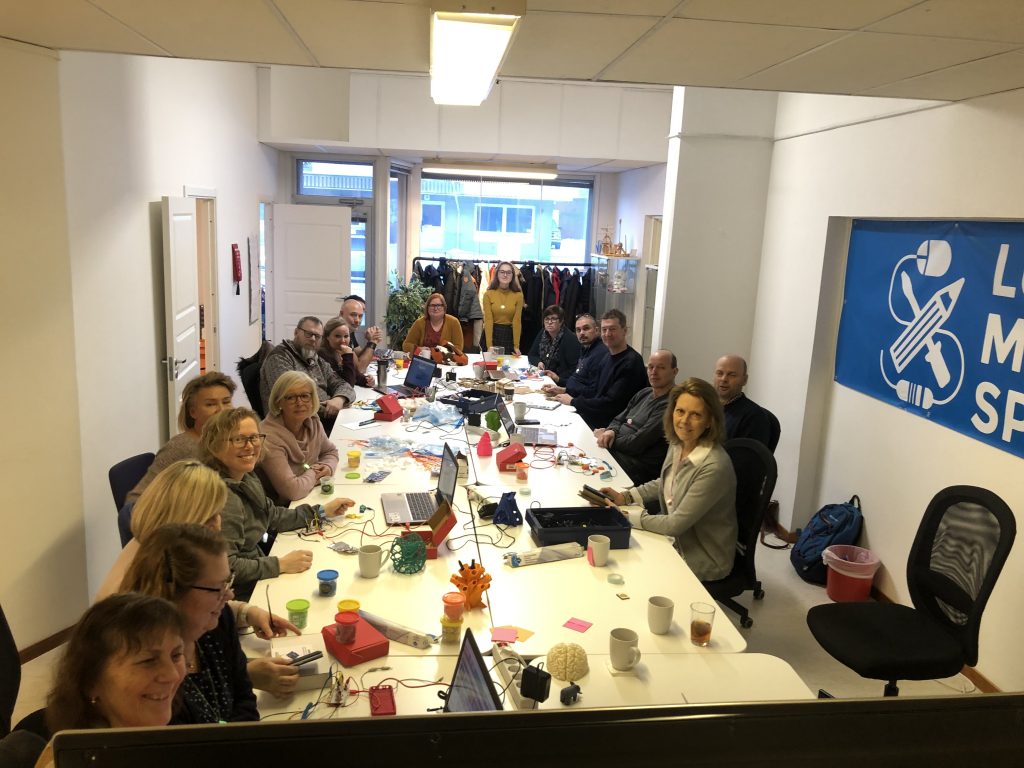
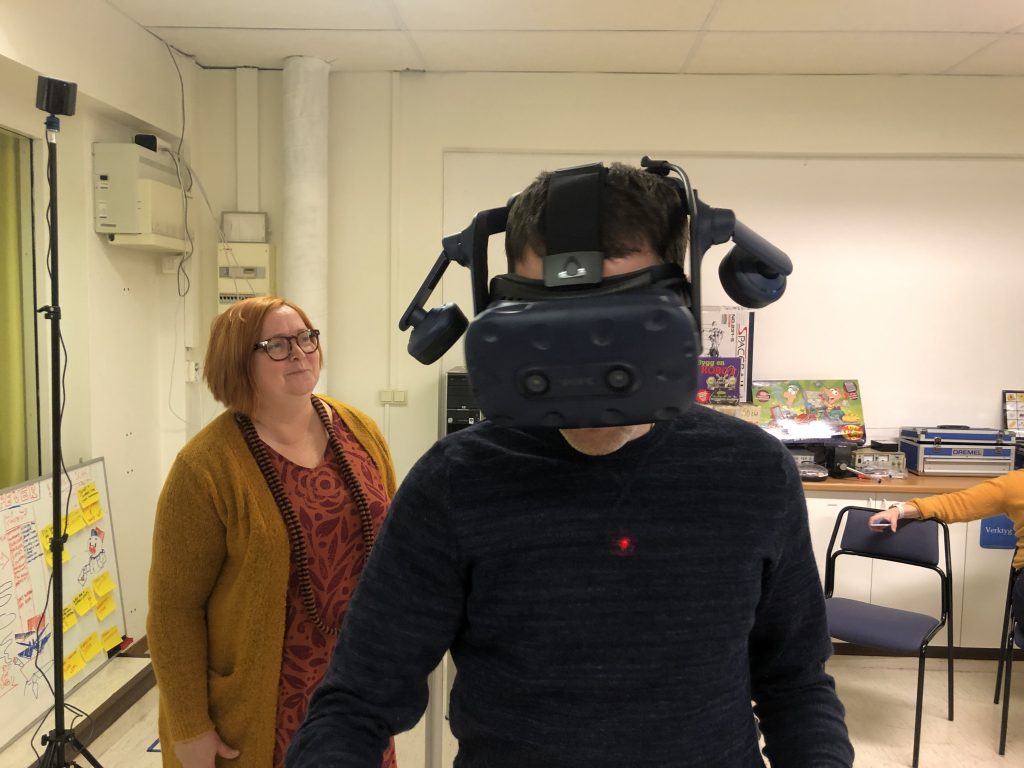
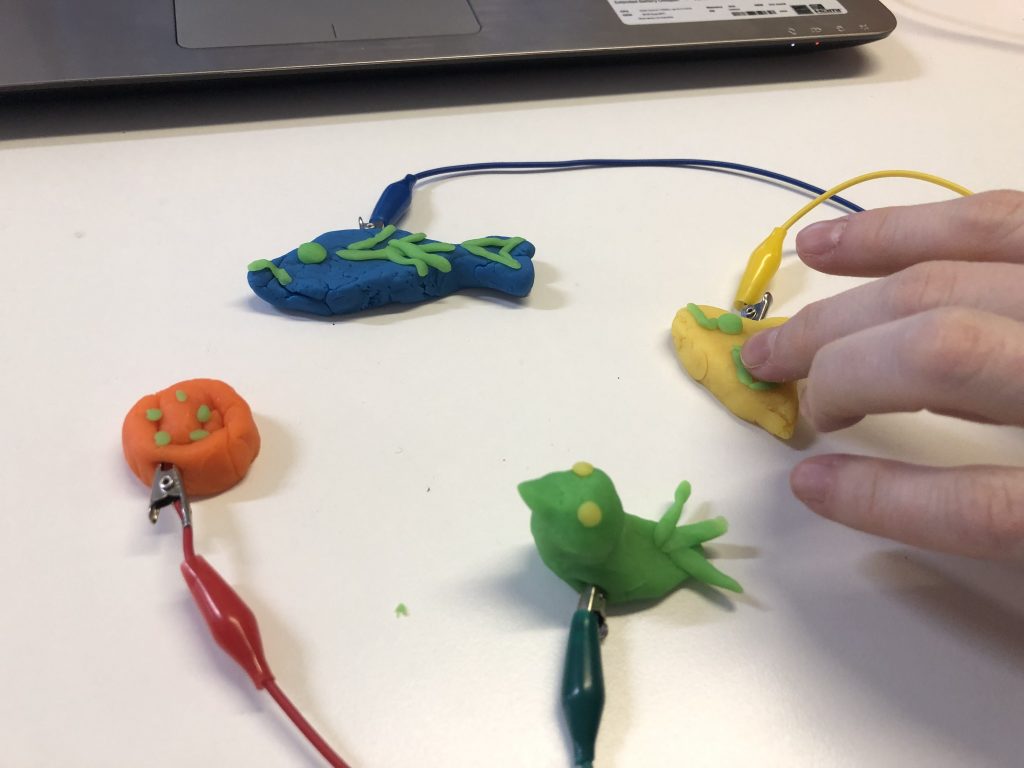
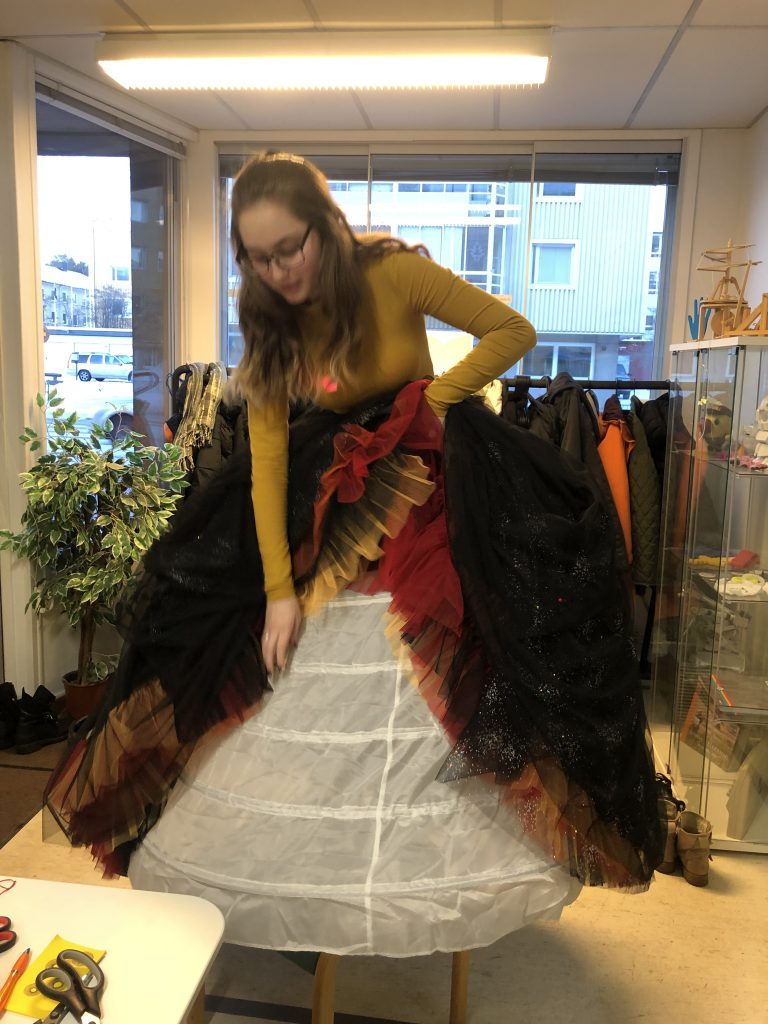
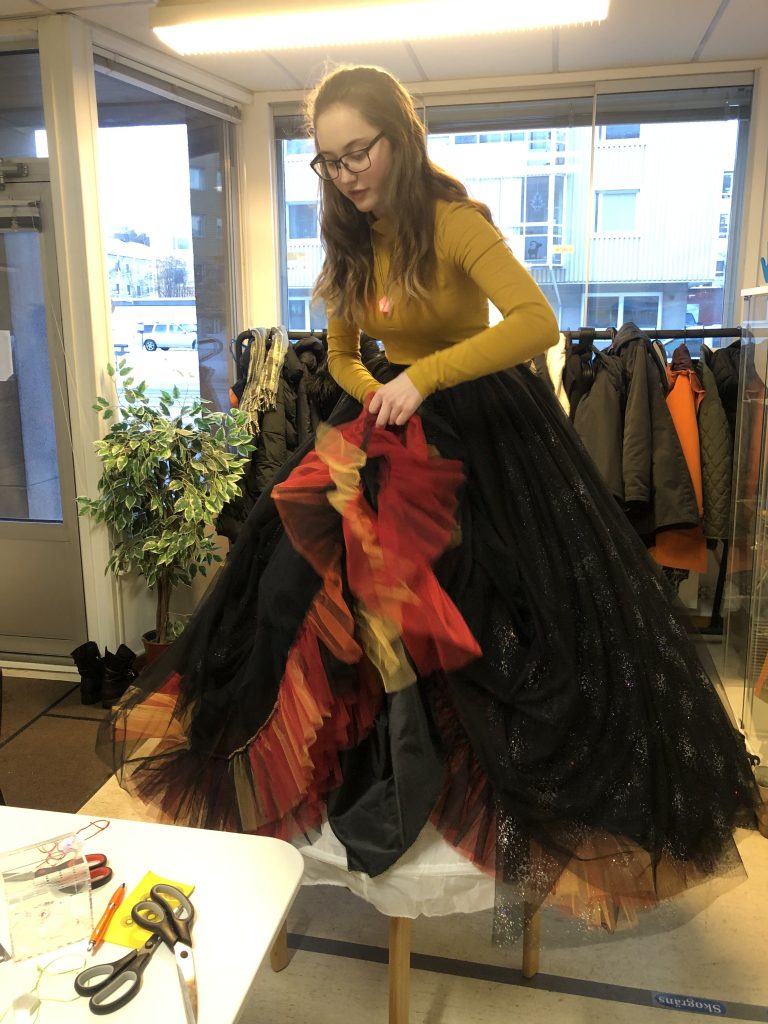
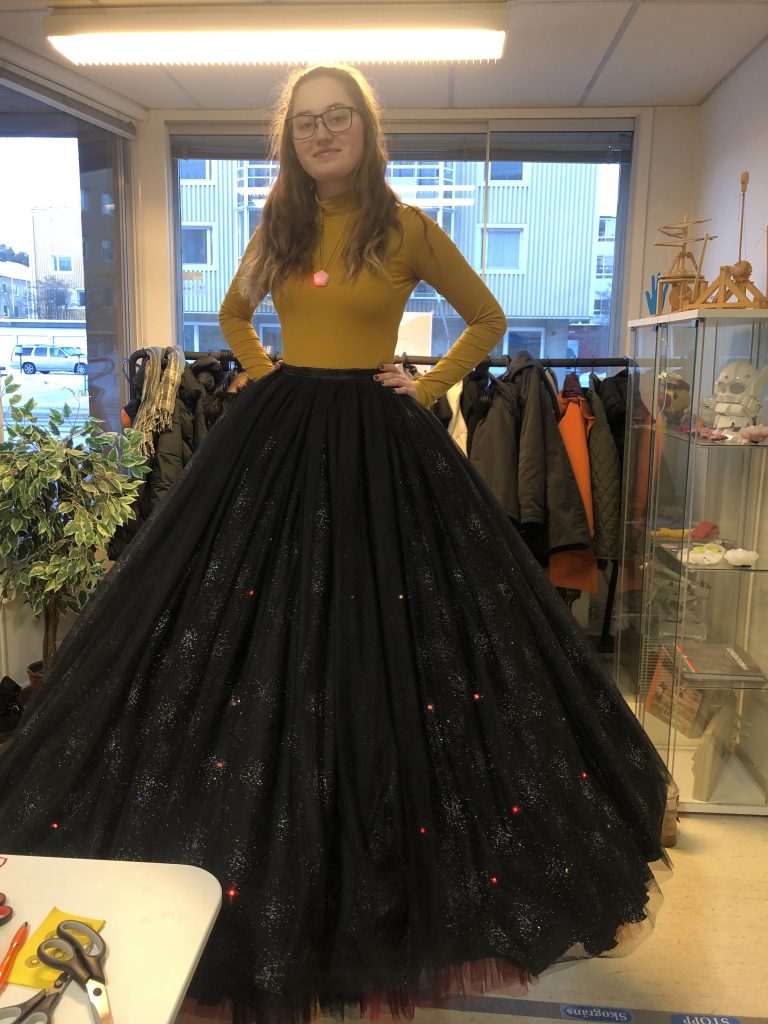
181023 håller ett av mina projekt, IDAG-projektet slutkonferens i Stockholm i form att frukostseminarium med flera talare. Vi håller till hos Vinnova och jag pratar 15 min om lärande på distans.